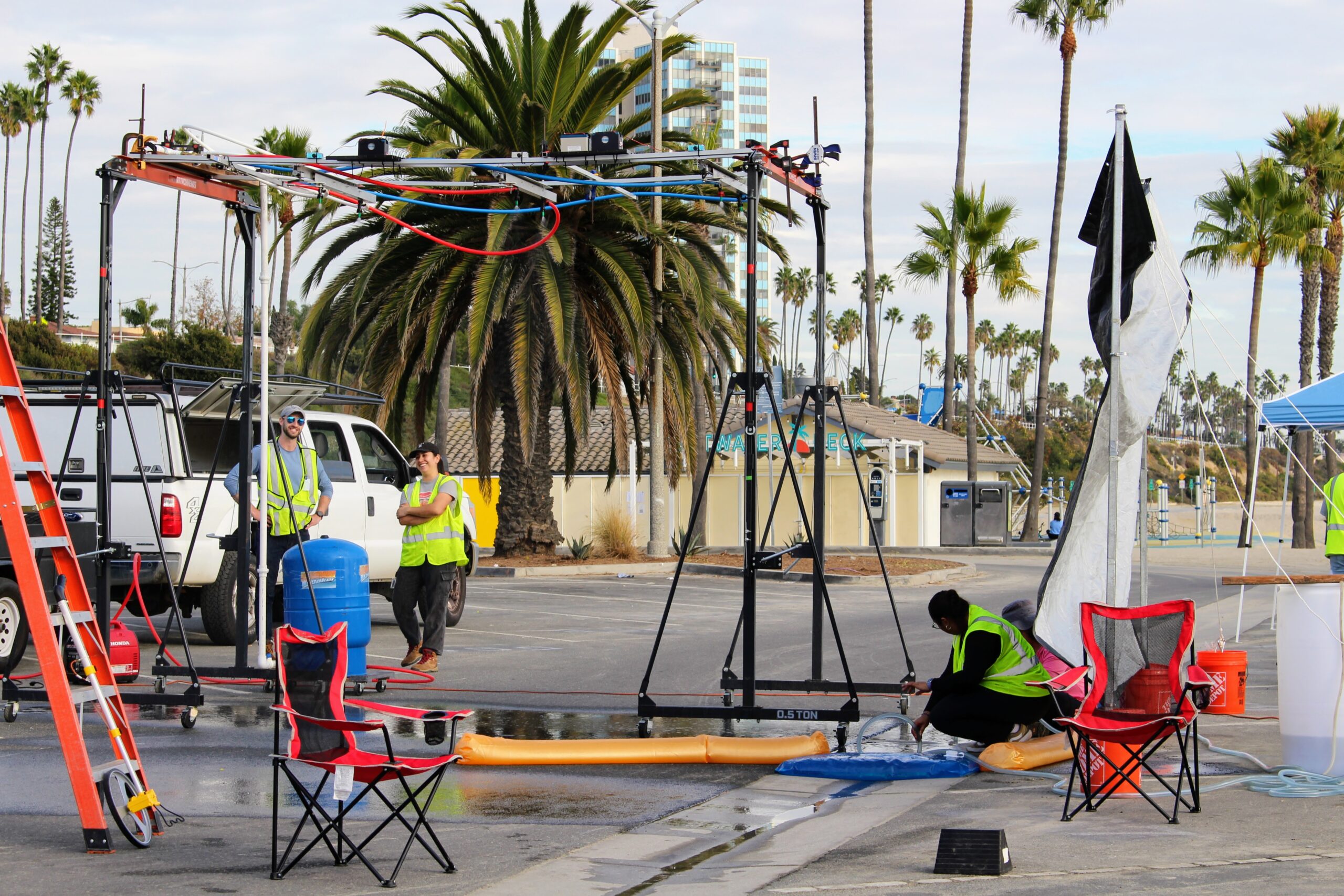The SMC has developed a technically robust method for quantifying the effectiveness of routine street sweeping in removing contaminants that would otherwise enter storm drains and contribute to runoff pollution – a study that moves stormwater managers one step closer to being able to understand street sweeping’s capacity to help protect runoff water quality.
The novel method, which is described in a newly published technical report, provides the SMC with a feasible path forward for investigating what role street sweeping plays in reducing runoff pollution. Managers also may eventually be able to use the method to generate insights that help optimize how they do routine street sweeping.
During the method’s development, which took place over the course of a three-year SMC study, researchers developed a field-deployable instrument for conducting testing, as well as pilot-tested the method at a single site, generating preliminary data suggesting street sweeping may provide a greater benefit for improving runoff water quality than traditionally assumed. Historically, nonstructural BMPs like street sweeping have been assumed to reduce contamination in runoff by 5-10%, based mostly on best professional judgement.
The study, however, was not designed to quantify the exact pollution removal efficiency of street sweeping. Instead, the study was designed to develop a robust method for measuring pollutant reduction that can now be implemented almost anywhere across California for almost any pollutant type – capabilities that historically have not been possible.
Already, the SMC is planning a follow-up investigation that will measure pollution removal efficacy at multiple sites to generate statistically robust results. For the follow-up study, which is scheduled to begin as early as this summer, the SMC is seeking out additional project partners that could help expand the study design, including by adding more sites and/or measuring the removal efficacy of additional pollutants.

Under stormwater discharge permits, managers commonly receive a runoff pollution credit for implementing routine street sweeping as part of a broader set of non-structural source-control measures, also known as Minimum Control Measures.
But this 5-10% street sweeping credit is based largely on best professional judgment, and less on scientific evidence. This knowledge gap has confounded managers’ abilities to work toward meeting their water-quality improvement goals. Additionally, some State regulators are moving away from granting credit for non-structural BMPs because of the lack of quantitative scientific evidence.
For more information, or to discuss potential partnership opportunities for the follow-up street sweeping study, please contact Dr. Elizabeth Fassman-Beck at the Southern California Coastal Water Research Project (SCCWRP).
Dive deeper
- How the SMC decided to study street sweeping’s effectiveness at pollution removal
- How the SMC developed a field-deployable rainfall generator
- How the SMC applied its new street sweeping evaluation method at a single site
- Read the conceptual workplan for the next phase of the SMC’s street sweeping study (see Project 4.2 of the SMC 2024-2029 Research Agenda)
SMC Spring 2025 Newsletter
Volume 5, Issue 3
This newsletter is published three times a year by the Southern California Stormwater Monitoring Coalition (SMC). To subscribe to this newsletter, contact inquiries@socalsmc.org.
